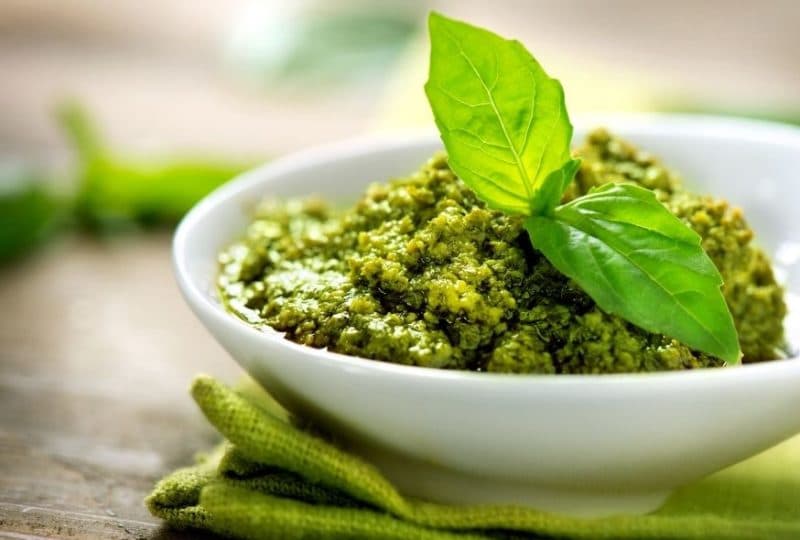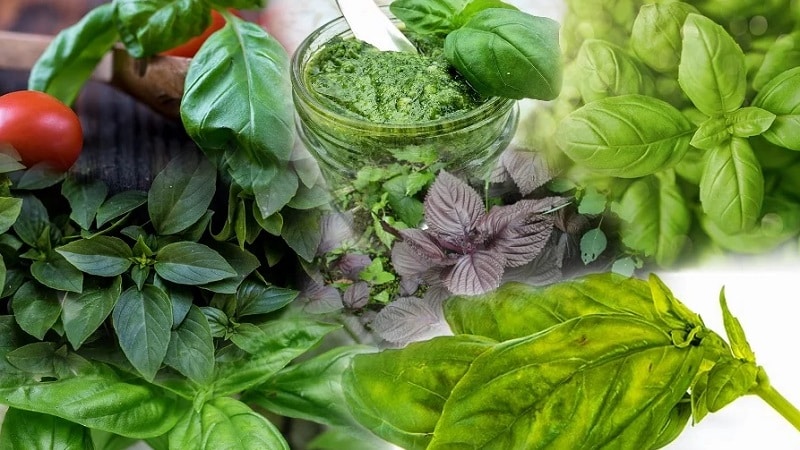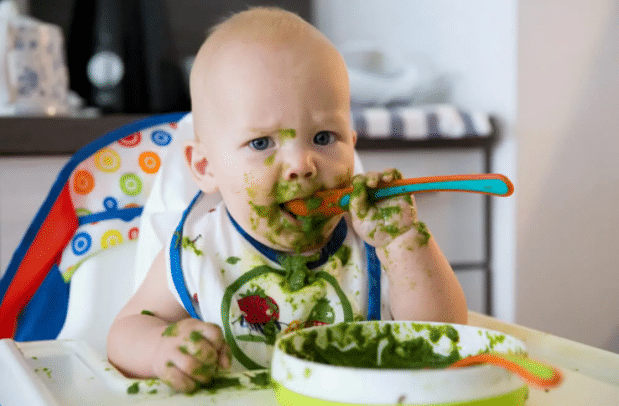Is it possible to eat basil while breastfeeding, the benefits and harms of greens
It is important for nursing mothers to consume safe foods that do not have a negative effect on the baby’s body. Therefore, their diet is limited. Many exclude basil from food, considering it a strong allergen. Let's consider whether the plant can be used during lactation, how it is useful and in what cases it is contraindicated.
Can a nursing mother eat basil?
The plant is not a strong allergen; in moderation it is safe for mother and baby. The spice has a beneficial effect on both organisms due to its chemical composition.

Composition, properties and contraindications
Different types of plants differ in the shade of leaves, taste and aroma: green varieties are delicate, while purple varieties are rich and tart.
Basil ordinary, or fragrant, which is most often used as a spice, contains:
- minerals (potassium, calcium, silicon, magnesium, phosphorus, iron, manganese, copper);
- vitamins (B1, B2, B5, B6, B9, C, E, K);
- carotenoids;
- tannins;
- essential oil (eugenol, cineole, linalool, camphor, etc.);
- saponins, glycosides and sugars.
The energy value of 100 g of greens is 27 kcal.
Reference. Purple basil leaves contain colored pigments called anthocyanins. They reduce inflammatory reactions and prevent cell damage due to oxidation.
Different types of basil have beneficial properties:
- The spice helps fight inflammatory processes in the body, supports the gastrointestinal tract, protects the cardiovascular system and increases stress resistance.
- Essential oil of fragrant basil, added to cosmetics, helps fight acne.
- Antioxidants in the plant protect cells from oxidation, and essential oil components inhibit the growth and reproduction of bacteria.
- Holy basil, or tulsi, is effective as an adjuvant in the treatment of non-insulin-dependent diabetes mellitus: it reduces blood glucose and total cholesterol levels.
- Tulsi reduces symptoms of stress and anxiety levels, and has an immunomodulatory effect.
The plant is not recommended for use in case of heart attack, stroke, epilepsy, hypertension, pregnancy, or individual intolerance. In case of diabetes, it is permissible only after the doctor’s permission.
The benefits and harms of basil for a nursing mother
Basil during breastfeeding does not harm the mother's body when consumed in moderation. It improves metabolism, strengthens the body's defenses, increases hemoglobin levels, and helps the body better adapt to stress.
For a child
The plant strengthens bone tissue and tooth enamel, improves the functioning of the cardiovascular system, normalizes digestion, helps with colic and flatulence, and relieves asthma attacks.
However, if greens are consumed in large quantities, essential oils can cause poisoning, colic, and bowel problems in a child.
Rules for use during lactation
Basil is added to food no earlier than 3-4 months after childbirth. By this time, the baby’s intestines will be strong enough and will accept foods correctly.

What time of day and how much is there?
The first time they eat basil is in the first half of the day, observing the child’s reaction for 2 days. If there are no allergic reactions, the amount of the plant can be increased to 2 tablespoons. It is added to salads, hot dishes, desserts and drinks.
Important! It is not recommended to eat basil more than 3-4 times a week: daily consumption of the spice can lead to stomach problems in a child due to the essential oils it contains.
The aromatic plant is combined with meat, fish, vegetables, and other herbs (parsley, dill, onion, celery). Lemon basil is added to tea and lemonade; it is fragrant and suitable for pesto sauce.
Is it possible to give basil to a child?
The plant is given to a child from 5 years of age. If an allergic reaction occurs, the spice is removed from the diet.

How to choose and in what form to use
Basil is sold fresh, frozen and dried. How to distinguish high-quality greens:
- the color of the leaves is rich and bright, uniform on both sides;
- the leaves are elastic and juicy, when rubbed with your fingers they give a rich and tart aroma;
- There is no plaque, dirt or stains on the grass.
If there are dry areas, an unpleasant odor, or growths on the leaves, it means that the plant is affected by diseases or pests.
Fresh, recently harvested greens provide maximum benefits. Dried is good for adding a tart flavor to dishes.
Other greens for breastfeeding
When breastfeeding, you can add dill, parsley, cilantro, spinach, lettuce, onion, celery, sorrel and other greens to your food. The rules for introducing it into the diet are the same as for basil. Be sure to monitor your baby’s reaction: if there is colic, bloating, spots and redness on the skin, it is better to discard the product.
This is interesting:
Is it possible to eat carrots while breastfeeding?
Conclusion
Basil is a good addition to many dishes during lactation. It is gradually introduced into the diet 3-4 months after birth, carefully monitoring the baby’s reaction. You can eat greens both dry and fresh. The main thing is to use it in moderation and not every day.